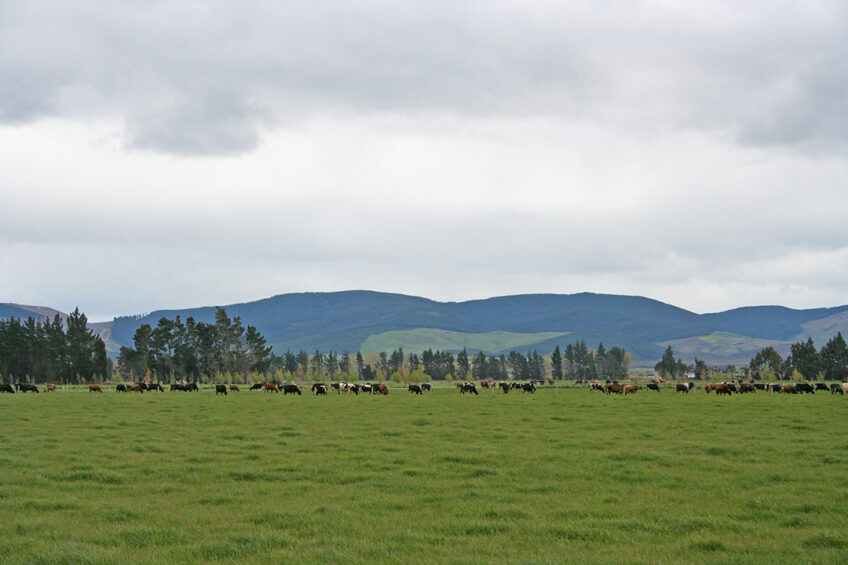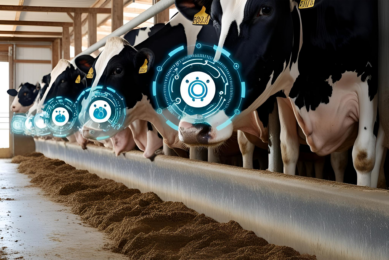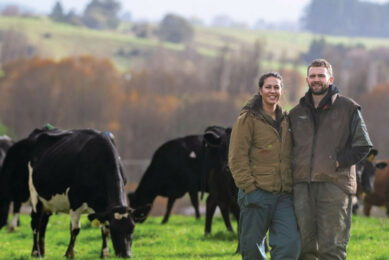New Zealand: A greener future for dairy

Dairy is the largest export goods sector in New Zealand, accounting for 1 in every 3 dollars New Zealand earns from the goods export trade.
Until March 2020, New Zealand exported US$ 14.3 billion of dairy products, which supported NZ$ 7.4 billion of direct value added to the New Zealand economy. Dairy is New Zealand’s largest value-edded contributor by far.
Last season marked a record year for dairy production, despite a decline in cow numbers. DairyNZ and Livestock Improvement Corp (LIC) statistics show that New Zealand dairy companies processed 21.1 billion litres of milk containing 1.90 billion kg of milk solids, up 0.6% from the previous season.

Fonterra is New Zealand’s largest dairy company and handles more than 90% of New Zealand’s milk production. It represents more than 20% of the total New Zealand merchandise exports and 7% of the country’s Gross Domestic Product (GDP).
Dairy makes a significant contribution to economic activity across regional New Zealand, accounting for more than 5% of the GDP in 7 regions in 2019 (and more than 10% in 4 of those). It provides jobs for around 50,000 people, mostly in New Zealand’s regional and rural communities.
Global market prices
Overview of prices for: raw milk, dry whey, skimmed milk powder, cheese and butter, as well as global dairy trade and world prices for dairy products. Stay up-to-date…
Fonterra, the biggest contributor, is a co-operative owned by around 10,500 New Zealand farmers. The company is responsible for approximately 30% of the world’s dairy exports.
Demand for New Zealand dairy continues to grow. Fonterra chief executive Miles Hurrell has said that strong demand from China and South East Asia for whole milk powder and skim milk powder was expected this year.

Half of emissions New Zealand come from agriculture
In New Zealand, half of the emissions come from agriculture, and nearly a quarter come from dairy biological emissions (nitrous oxide and methane).
Recent research shows New Zealand dairy farmers have the world’s lowest carbon footprint, with the country’s dairy sector emitting half as much as other international producers. An analysis from AgResearch confirms that New Zealand retains its favourable position in low emission dairy milk production, with an on-farm carbon footprint 46% lower than the average of 18 countries studied.
The carbon footprint is measured in total greenhouse (GHG) emissions per kg of product. The research compares carbon dioxide equivalent (CO2e) emissions per kilogramme of milk (fat and protein corrected milk – the nutritional content recognised in the study as CO2e per kg FPCM). New Zealand produced 0.74 kg CO2e per kg FPCM (fat and protein corrected milk). This proved to be 46% less than the average of the countries studied.
14 Tips to decrease ammonia emissions in dairy cattle
The reduction of emissions from animal production is becoming increasingly more important. Here are 14 tips for dairy production gathered by the author from experts.
According to DairyNZ chief executive Dr Tim Mackle, New Zealand’s grass-based, outdoor grazing system is unique globally and is critical to its results in low emissions. There is a huge amount of work underway to support farmers to reduce emissions even further, he says. “Because we are already so efficient, there is no silver bullet to even greater efficiency. Significant investment in research and development is needed to find solutions.”
Insight for farmers
Fonterra farmers have been receiving unique Greenhouse Gas (GHG) emissions profiles for their farms – a tool which forms part of a Farm Environmental Report – which combines a GHG Report and Nitrogen Risk Scorecard.
The reports are designed to provide useful insights for farmers to help identify opportunities for improvements on-farm – providing indicators such as the estimated level of biological methane and nitrous oxide emissions per hectare, and the amount of emissions per kilogramme of milk solids.
Fonterra says that one of the most important steps in improving its emissions profile is for farmers to understand where their emissions come from. With the reports in farmers’ hands, the focus will turn to implementing practical and sensible solutions to help reduce emissions.
Impact on GHG emissions when removing dairy cows
Often the suggested solution to combat greenhouse gas emissions has been to reduce or eliminate this industry in favour of plant production. But what is the actual impact on the environment? And what will the removal of dairy cows mean in terms of emissions?
According to a new blueprint for the future of New Zealand’s Climate Change Commission, biogenic methane emissions are projected to fall 7% below 2017 levels by 2030 compared with the target of 10%. By 2050, they are projected to fall 12% below 2017 levels compared with the target range of 24–47%.
The commission suggests a path that sees biogenic methane reduce by 17% by 2035 relative to 2017 levels, putting New Zealand on track to meeting the biogenic methane target of reductions of at least 24%-47% by 2050. If some of the more uncertain methane reducing technologies come to fruition, biogenic methane emissions could reduce even further.
Breeding for low emissions cattle
Emissions reductions in dairy in New Zealand occur through a combination of land use change from agriculture to forestry and other uses, reductions in dairy cow numbers partly due to freshwater policy, and ongoing improvements in the emissions efficiency of agricultural production.
The commission’s goals include the reduction of dairy and sheep and beef animal numbers each by around 15% from 2018 levels by 2030. This compares with an 8-10% reduction projected under current policies. The targets for food processing are roughly equivalent to converting 2 very large dairy processing plants away from coal each year or converting a larger number of smaller plants.
New Zealand farmers have lowest carbon footprint
New research shows New Zealand dairy farmers have the world’s lowest carbon footprint. The country’s dairy sector has half the emissions of other international producers.
In its blueprint, the commission has included transforming a small amount of dairy land into horticulture, at a rate of 2,000 hectares per year from 2025. Breeding for low emissions cattle is a future possibility but the research is in an early stage. The blueprint has not assumed any contribution from this by 2035.
Competitive production
The use of a methane inhibitor being widely adopted on dairy farms, could lead to reducing methane emissions from dairy cattle by around 5% in 2030 and 15% by 2035. This would depend on future use of such an inhibitor.
The commission believes that New Zealand may lose market access as global markets increasingly seek lower emission products such as low emissions alternatives and synthetic proteins. It assumes that production in New Zealand will be competitive in a low emissions future where meat and dairy products are still consumed, certainly if New Zealand can maintain and strengthen its position as one of the lowest emissions producers.
Combatting methane: Fonterra and DSM collaborate
In an effort to lower methane emissions, Fonterra and DSM are working together to combat the challenges methane emissions bring to agriculture.
DairyNZ chief executive Dr Mackle says the proposals and underlying assumptions for the future of New Zealand will be closely examined, in particular the biogenic methane targets and advice on reducing stock numbers.
“As a sector, we are committed to producing sustainable food and remaining the world’s most emissions efficient. So, like every kiwi playing their part in addressing climate change, dairy must play our part too,” he says.
Join 13,000+ subscribers
Subscribe to our newsletter to stay updated about all the need-to-know content in the dairy sector, two times a week.










